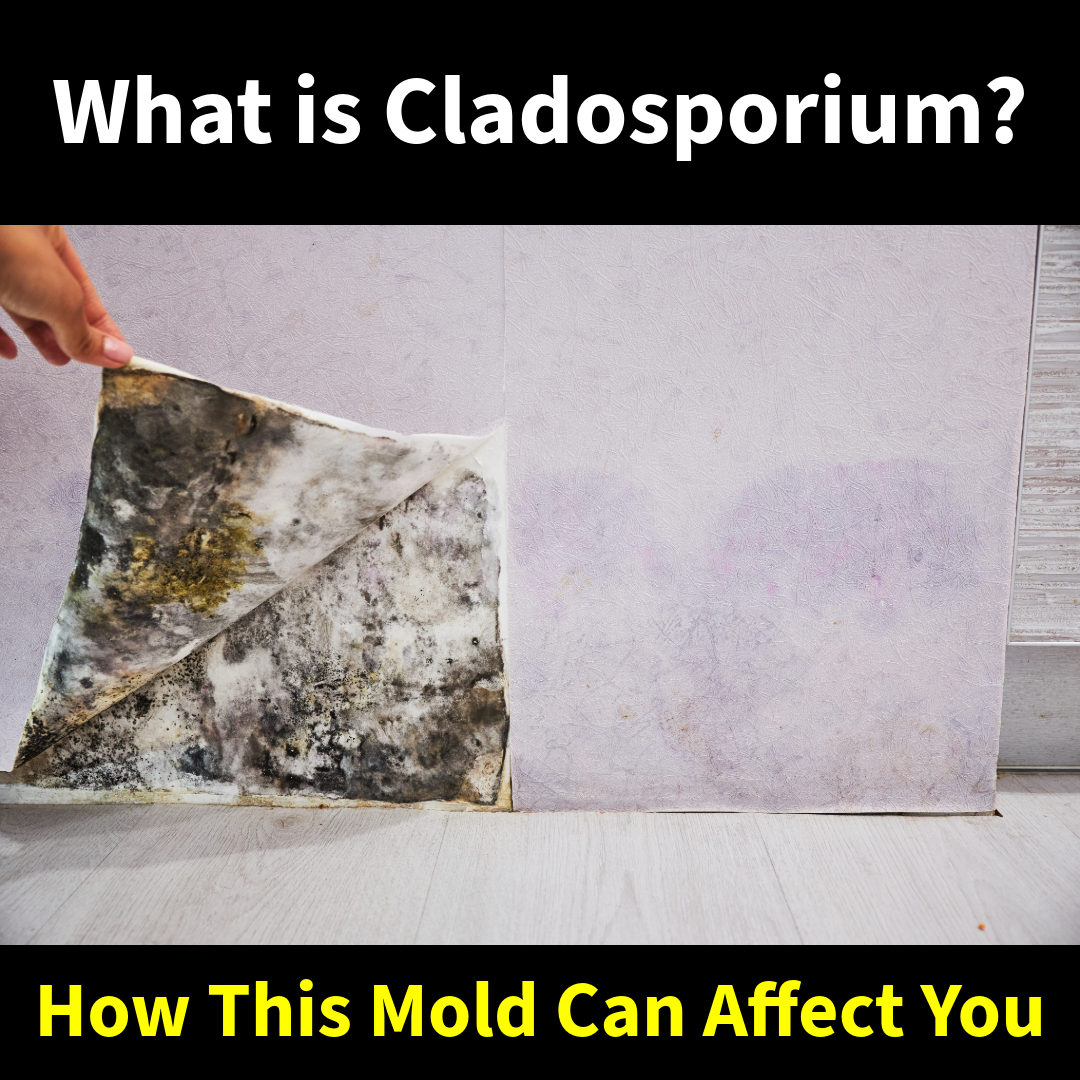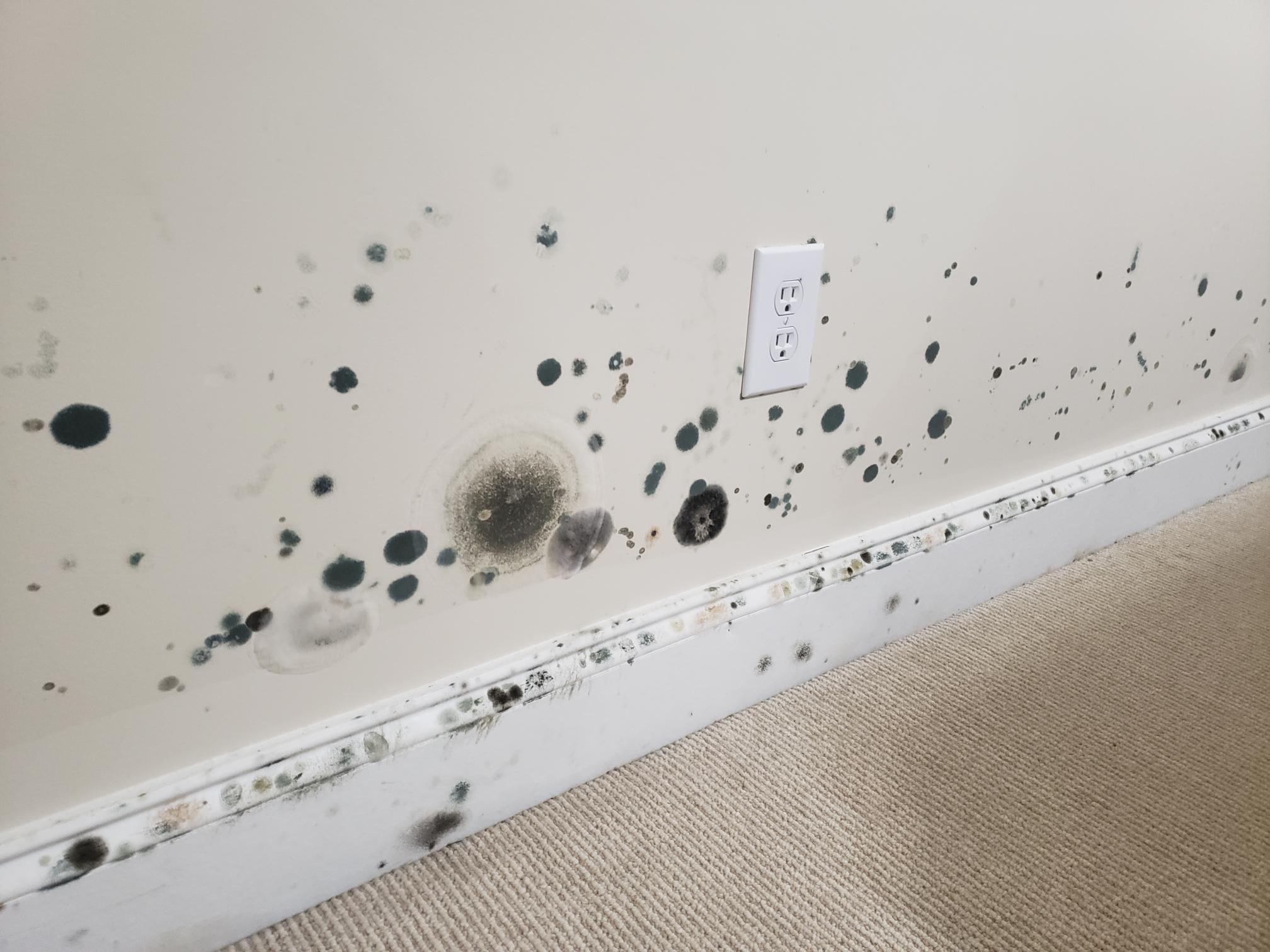Cladosporium is the genera most frequently encountered in both outdoor and indoor air. It is found in elevated levels in water-damaged environments. Some species may be resistant to certain types of treated lumber. Cladosporium appears gray to black or very dark green and can have a powdery appearance. The genus Cladosporium includes over 30 species. The most common ones include Cladosporium elatum, Cladosporium herbarum, Cladosporium sphaerospermum, and Cladosporium cladosporioides.
Cladosporium is a dematiaceous (pigmented) mold widely distributed in air and rotten organic material and frequently isolated as a contaminant on foods. Some species are predominant in tropical and subtropical regions . Also, some Cladosporium spp. were isolated from fish and were associated with findings of infection. Cladosporium is a common fungus that is a known and documented aero-allergen which is usually associated with plants, wood products, and leather goods; the spores are easily made airborne and as such are a common cause of respiratory problems; allergic reactions and can be an agent for hypersensitivity diseases; it is as a parasite in infections of the skin, soft tissues or nails and has been documented in cases of Blastomycosis, Candidiasis, Chromoblastomycosis, Histoplasmosis, Entomophthoramycocis, Phaeophphomycocis and Keratomycosis.
The findings suggest that fungal antigens from species found in homes are commonly associated with skin sensitization in an allergy clinic population with upper or lower respiratory allergy. No specific relationships were found, however, between the prevalence of fungal species in the home environment and the prevalence as skin-test allergens.
Most commonly identified outdoor fungus. The outdoor numbers are reduced in the winter. The numbers are often high in the summer. Often found indoors in numbers less than outdoor numbers. Indoor Cladosporium may be different than the species identified outdoors. It is commonly found on the surface of fiberglass duct liner in the interior of supply ducts. A wide variety of plants are food sources for this fungus. It is found on dead plants, woody plants, food, straw, soil, paint and textiles. Produces greater than 10 antigens. Antigens in commercial extracts are of variable quality and may degrade within weeks of preparation.

